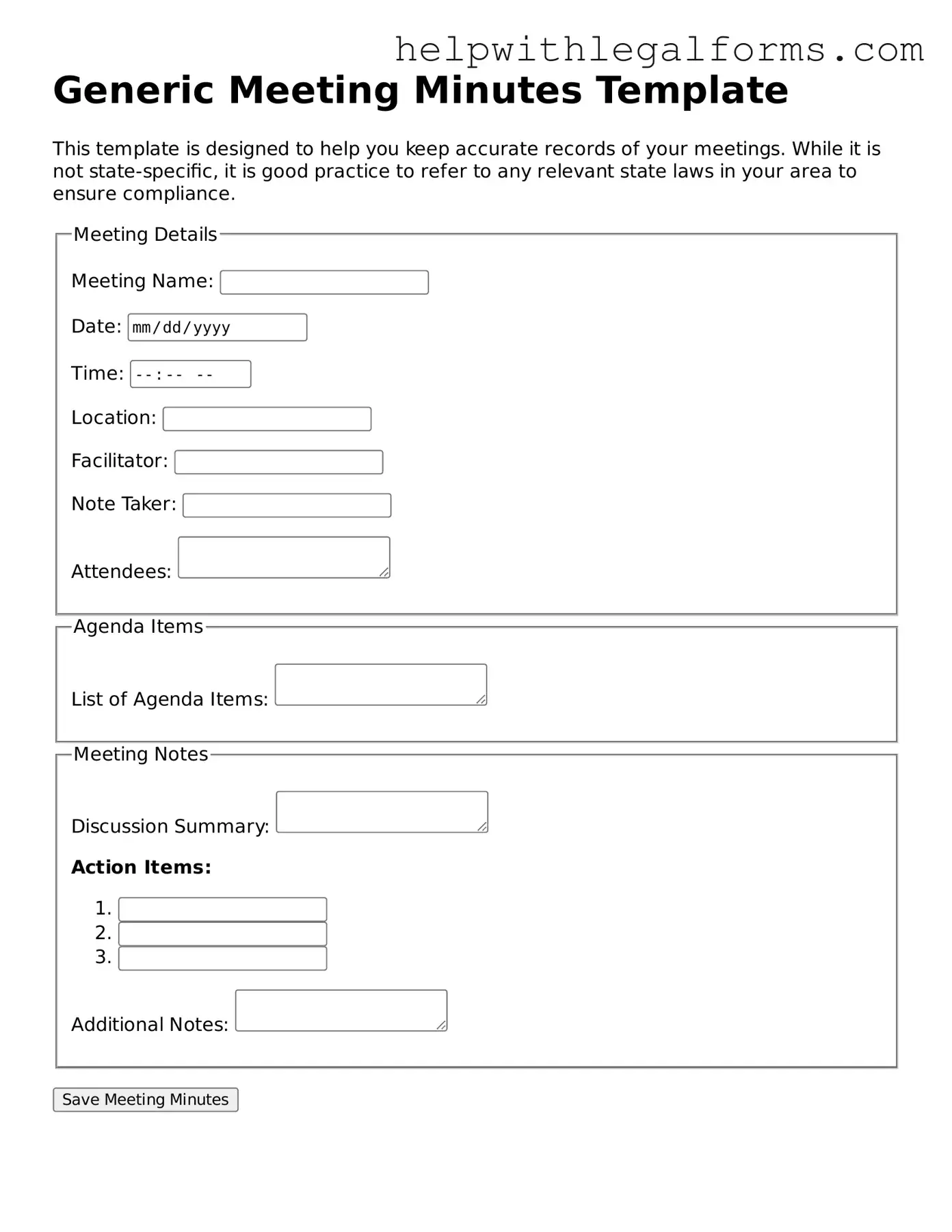What are Meeting Minutes?
Meeting minutes are a formal written record of the discussions and decisions made during a meeting. They provide a detailed account of what was discussed, decisions made, actions to be taken, and who is responsible for them. Meeting minutes are used for future reference and to ensure accountability.
Who is responsible for taking Meeting Minutes?
Typically, a designated individual, often referred to as the secretary or minutes-taker, is responsible for taking the meeting minutes. This responsibility can be assigned to a member of the meeting or an administrative professional.
What should be included in Meeting Minutes?
Meeting minutes should include the meeting’s date, time, and location, a list of participants, a statement of the meeting objectives, a summary of the discussion points, decisions made, actions that need to be taken (including deadlines), and the adjournment time. It may also note any attachments or documents reviewed during the meeting.
Are Meeting Minutes legally binding?
In many contexts, meeting minutes can serve as a legal document that records the decisions made by a board or organization. They can be used in legal proceedings to prove that a decision was made by the group collectively. Therefore, accuracy and clarity in meeting minutes are crucial.
How soon after a meeting should the minutes be distributed?
It is best practice to distribute meeting minutes as soon as possible after the meeting, typically within 24 to 48 hours. This ensures that attendees can quickly review the decisions and actions required while the discussion is still fresh in their minds.
Do Meeting Minutes need to be approved?
Yes, meeting minutes generally need to be approved by the attendees of the meeting. Approval is usually sought at the beginning of the next meeting to ensure accuracy and agreement on the recorded discussions and decisions. This approval process helps to formalize the document.
How should Meeting Minutes be stored?
Meeting minutes should be stored securely, either in a digital format or as a hard copy, in a location where they can be easily accessed by participants and relevant stakeholders. It is advisable to have a systematic filing system for easier retrieval of past records.
Can Meeting Minutes be modified after they have been approved?
Once meeting minutes have been approved, they become an official record of the meeting. Any modifications after approval should be done with caution and typically require agreement from the meeting’s participants or a formal amendment process during a subsequent meeting.
What is the difference between Meeting Minutes and a Meeting Agenda?
The meeting agenda is a list of items that are to be discussed during the meeting, serving as a plan for the meeting. Meeting minutes, on the other hand, are a record of what was actually discussed and decided during the meeting. While the agenda sets the expectations for the meeting, the minutes provide an accurate historical account of the meeting's outcomes.
